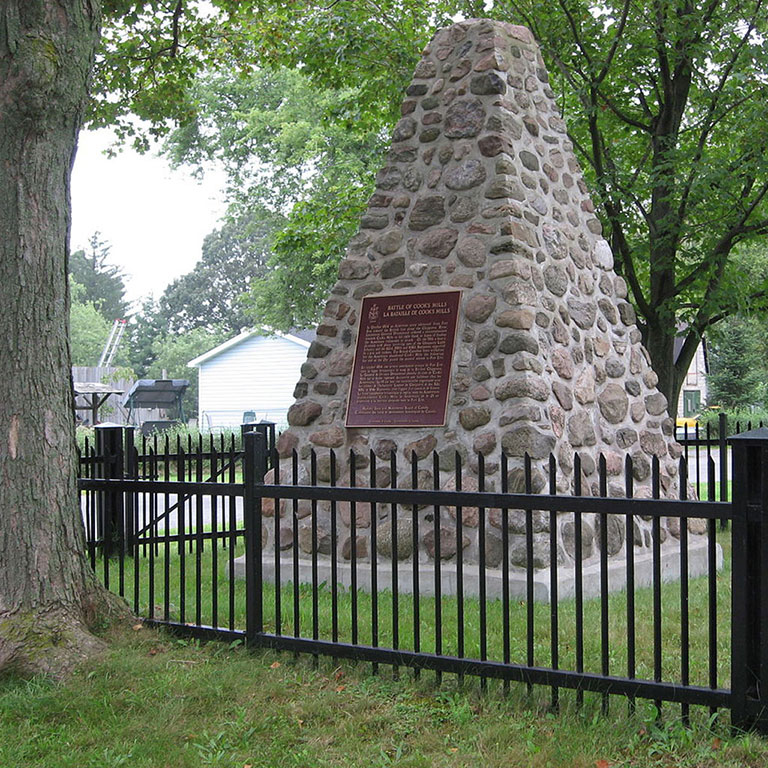Welland War History
Monuments and peace gardens mark Welland’s war past.
Welland Crowland War Memorial
The Welland Crowland War memorial is the last large World War I memorial erected in Canada. A significant piece of Canadian sculpture, the memorial was created by artist Elizabeth Wyn Wood, winner of a national competition for the project. Welland’s World War I memorial is unique in that it departs from the design of a single soldier common on other vintage monuments; instead it incorporates stylized elements of red pine and wheat sheaves with the representation of a First World War trench mortar. Two heroic figures – a soldier and a woman – symbolize the service and sacrifice of those who fought and those who supported the war effort at home. It was unveiled one day after the start of the Second World War on September 4, 1939, by Lieutenant Colonel Archdeacon F. G. Scott, D.S.O., senior chaplain of the First Canadian Division during World War I, and noted Canadian poet.
Cooks Mills Peace Garden
Lyons Creek and Doan's Ridge Roads
The Battle of Cooks Mills was the last battle fought in Niagara during the War of 1812. The battle took place in October 1814 and is the inspiration behind the peace garden. Cherished by residents, visitors, and history enthusiasts, the garden acknowledges more than 200 years of peace.
Battle of Cook's Mills
Corner of Lyons Creek and Matthews Roads
On October 18, 1814, Major-General George Izard ordered Brigadier General Bissell, with about 900 men, to march to Cooks Mills, a British outpost, to seize wheat provisions intended for British troops. On October 19, at Cooks Mills, a heavy skirmish took place, involving men of the Glengarry Light Infantry and the 82nd, 100th, and 104th Regiments. Led by Lieutenant-Colonel Christopher Myers, the British and Canadian troops succeeded in their objective of assessing the American forces so that Drummond could take appropriate action. Having accomplished their reconnaissance in force, they withdrew in good order. Bissel also accomplished his mission of destroying the wheat stored at the mills, after which he and his men withdrew to join the main American force. Shortly afterwards, the Americans destroyed Fort Erie and re-crossed the Niagara River to go into winter quarters.
Contact
- Recreation, Sport & Culture
- Welland Community Centre,
145 Lincoln St., Welland, ON L3B 6E1 - 905-735-1700 x4000
- tourism@welland.ca
- /wellandrecandculture
- /recreationandculture



